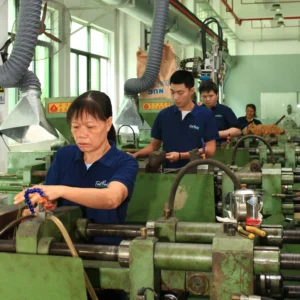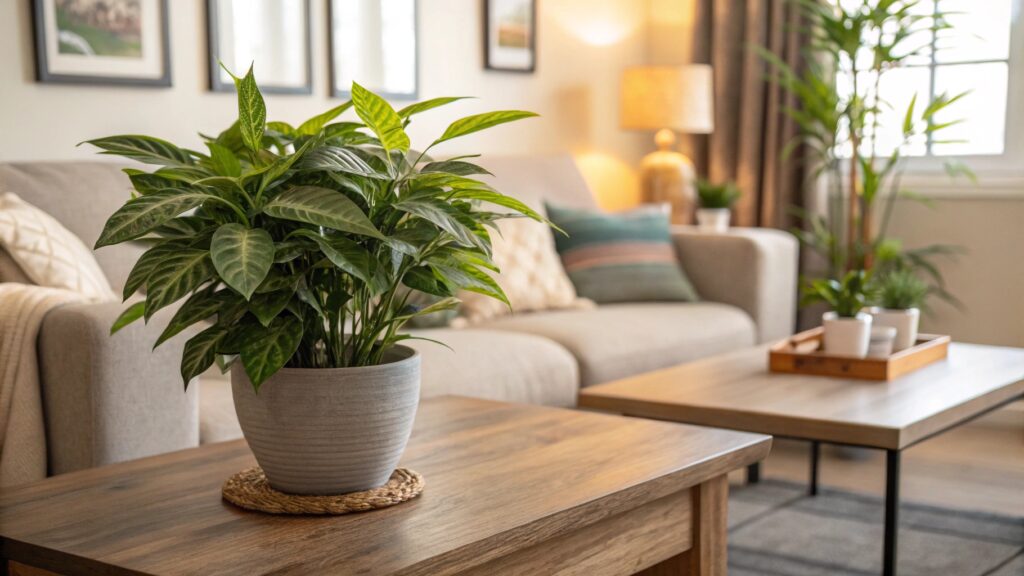Do you crave a touch of everlasting green in your home, but lack a green thumb or the time for upkeep? Maybe you’ve tried artificial plants before, only to be disappointed by their waxy sheen and plastic forms.
Forget those outdated imitations. The world of artificial plants has reached a stunning new level of realism. They are no longer just cheap plastic substitutes; they are botanical works of art.
This ultimate guide will reveal all the secrets to choosing truly realistic faux plants and recommend 10 picks that will impress even the most discerning eye. Let’s find the “perfect” plant for your space, together.
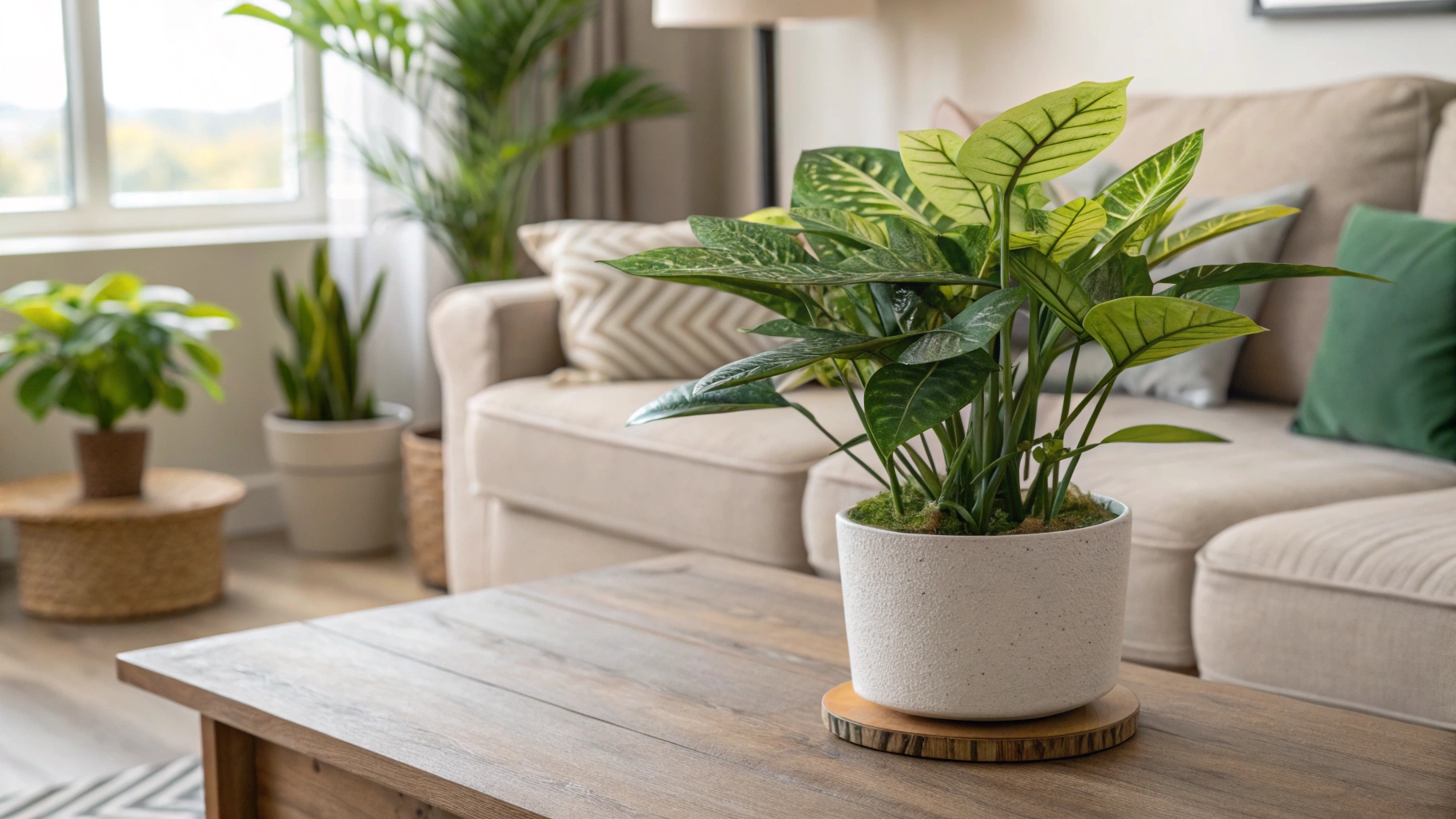
What are the key features to look for in realistic artificial plants?
You might spend money on some plants that looks great online, only to be disappointed by its plastic appearance in person. Let’s unlock the secrets of realistic artificial plants. What separates a truly convincing artificial plant from a cheap knock-off comes down to the details. Before you make a choice, understand the two core elements that define realism: Materials and Craftsmanship.
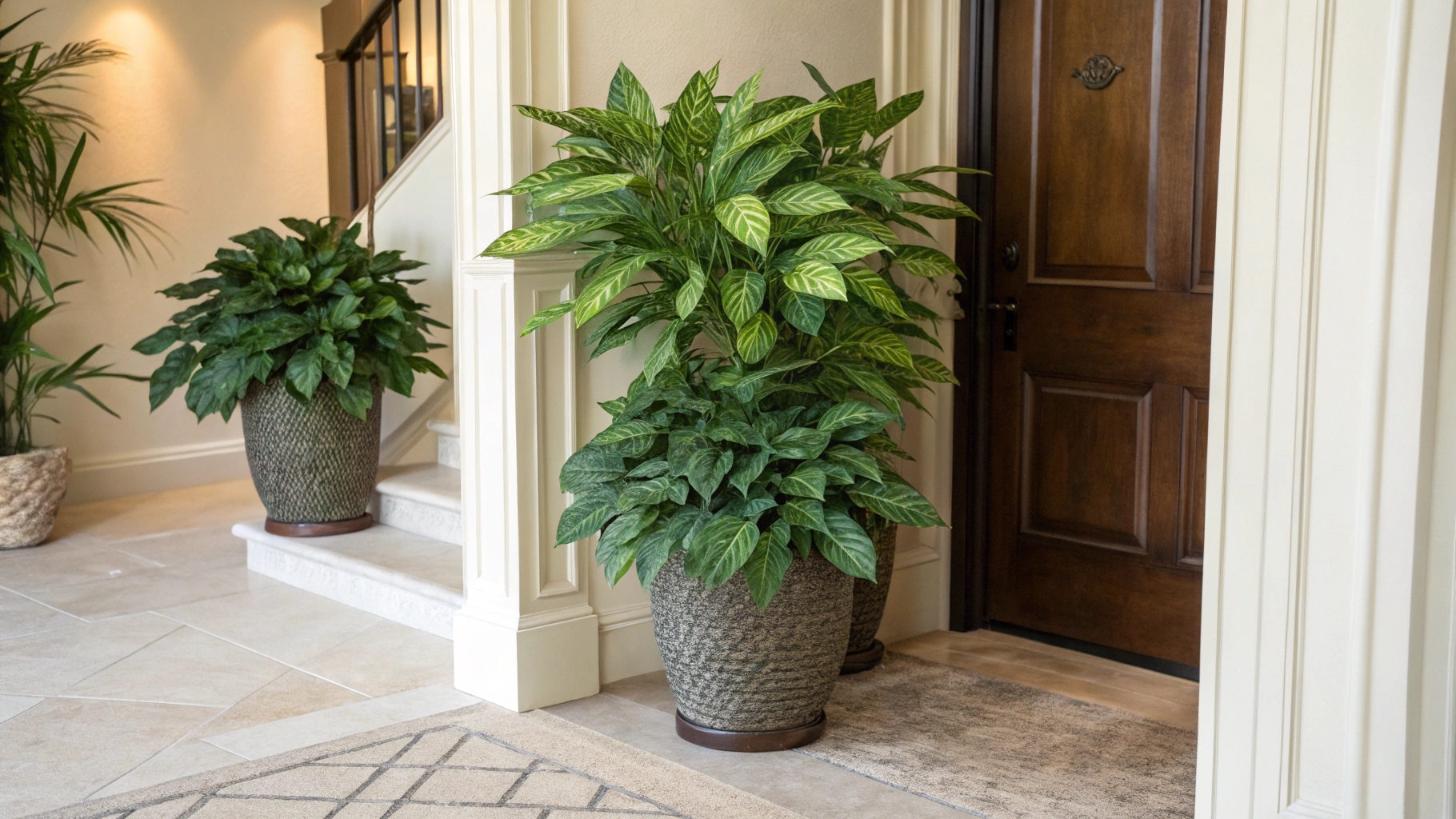
Material Matters
The Key features are high-quality raw materials (silk, PE blends, latex), color gradation, matte finish, detailed veining and texture, and sometimes weighted bases. Realistic plants often require “fluffing” or assembly to achieve natural shapes.
The raw material used is the foundation of a realistic artificial plant. Different materials create different textures and appearances. Understanding them is the first step in choosing like a pro.
| Material | Benefits | Best For | Things to note |
|---|---|---|---|
| Silk | Intricate detail, delicate texture | Flowers, delicate leaves | Premium pricing due to material cost |
| Polyethylene (PE) | Durable, good for texture, “Real Touch” options | Larger-leafed plants (Monstera, Fiddle Leaf Fig) | “Real Touch” designation indicates superior grade |
| Latex | Natural feel, subtle color variations | Various, adds to overall realism | Higher cost reflects material authenticity |
| Fabric | Used for some plants such as Succulents | Various, succulentsLimited durability, requires careful handling | Limited durability, requires careful handling |
| Foam Filled | Exterior is plastic, foam filled | Gives plants realistic weight | Typically found in high-end, premium-priced plants. |
The Devil is in the Details
It’s not just what it’s made of, but how it’s made.
- Color Gradation: Real plants do not only have one solid color. You can look for subtle shifts in hue, mimicking natural growth.
- Matte Finish: Shine is a dead giveaway for artificial plants. A matte finish can absorbs light more naturally.
- Hand-Painted: You can choose hand painted varieties formore realism.
- Detailing:
- Veins: Realistic leaf veins are essential.
- Textured Stems: Stems and branches should have texture, not be smooth plastic.
- Irregularity: Perfection is unnatural. The best artificial plants have slightly different leaf shapes and sizes.
- Weight: Higher-end plants often have weighted bases.
- Assembly: “Fluffing” (bending and shaping wired leaves) is a good sign – it allows for customization.
- “Real Touch” Technology:It creates a tactile experience similar to touching a real plant.
In short, the highest realism of fake plant is achieved through a synthesis of thoughtful design and quality components. Realistic faux plants use premium materials like silk, PE, or latex with matte finishes, color gradation, and hand-painted details. Features such as textured stems, natural irregularities, weighted bases, and “Real Touch” technology make plastic plants look and feel close to real plants.
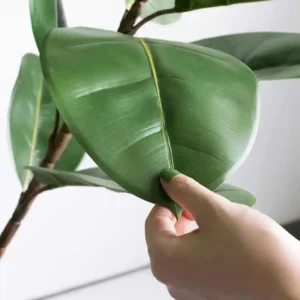
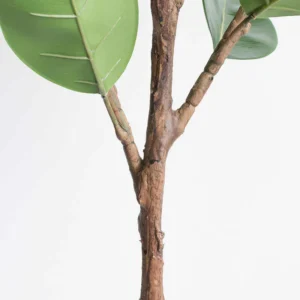
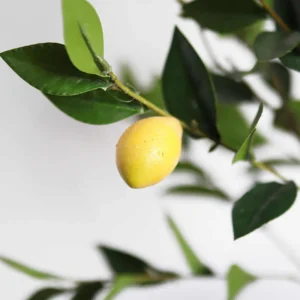
Top 10 Fake Plants That Look Real:
The following 10 plant varieties consistently achieve high levels of realism in artificial form. They are the excellent choices for demanding commercial and residential projects. Their inherent structural and textural characteristics lend themselves well to high-quality replication with modern materials and manufacturing techniques.
Let’s examine the key features and considerations for each:
1. Monstera ( Monstera deliciosa )
- Botanical Justification: The tall, leathery leaves of Monstera deliciosa are iconic. This inherent structure provides a strong foundation for realistic artificial replication.
- Material Specifications: High-density polyethylene (HDPE) or “Real Touch” polyethylene blends are preferred. Look for multi-tonal green coloration with lighter green accents to mimic natural variegation.
- Construction Details: Stems should exhibit textural variations and a matte finish. Avoid perfectly cylindrical or smooth stems. Leaf veins should be deeply impressed, not simply printed. The overall form must reflect a natural, asymmetrical growth habit.
- Pro Tip: Larger specimens (5ft+) are particularly impactful and can serve as focal points in interior landscapes.
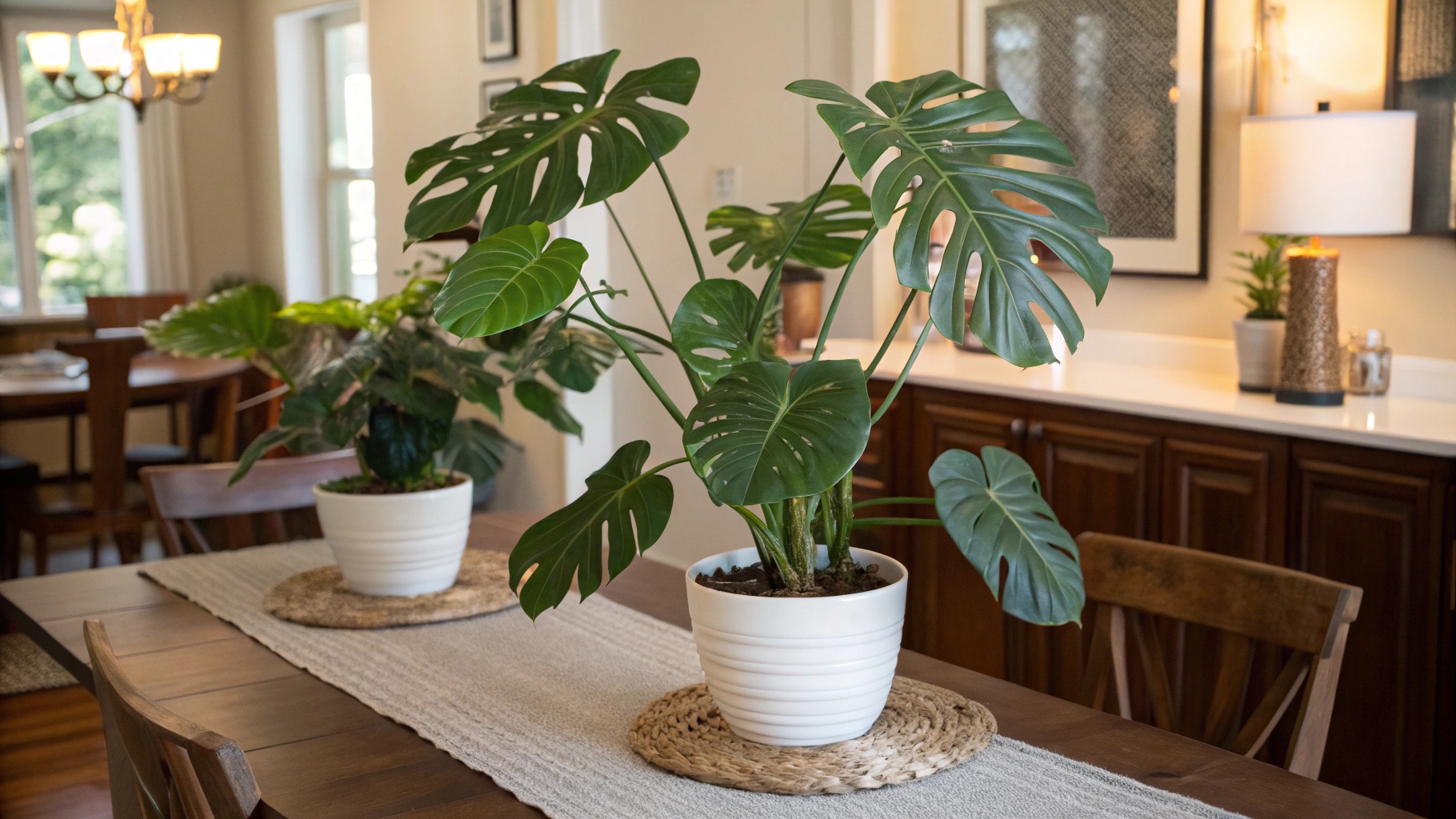
2. Fiddle Leaf Fig ( Ficus lyrata )
- Botanical Justification: The large, fiddle-shaped leaves of Ficus lyrata have a distinctive texture and prominent venation that, when accurately replicated, creates a highly believable artificial specimen.
- Material Specifications: Premium-grade silk or a blend of silk and PE is often used for the leaves to achieve the lifelike texture and subtle sheen. Trunks can be crafted from real wood or a highly detailed artificial bark composite.
- Construction Details: Leaves must be individually wired to allow for shaping and posing. The trunk should exhibit variations in thickness and texture, mimicking the natural growth patterns of a mature tree.
- Pro Tip: Consider the height and spread carefully. Fiddle Leaf Figs are often used as statement pieces, so ensure the scale is appropriate for the space.

3. Olive Tree ( Olea europaea )
- Botanical Justification: The lanceolate, silvery-green leaves and often multi-stemmed trunk of the olive tree offer a unique aesthetic that translates effectively to artificial versions.
- Material Specifications: Leaves should be a matte, silvery-green color, often achieved with a flocked textured PE material. The trunk should be a convincing replica of aged olive wood, potentially incorporating real wood elements for added authenticity.
- Construction Details: The overall form should be slightly irregular and asymmetrical, reflecting the natural growth habit of olive trees. Leaf density should be carefully considered to avoid an overly dense or artificial appearance.
- Pro Tip: Olive trees are ideal for creating a Mediterranean ambiance, and pair well with terracotta pots and other natural materials.
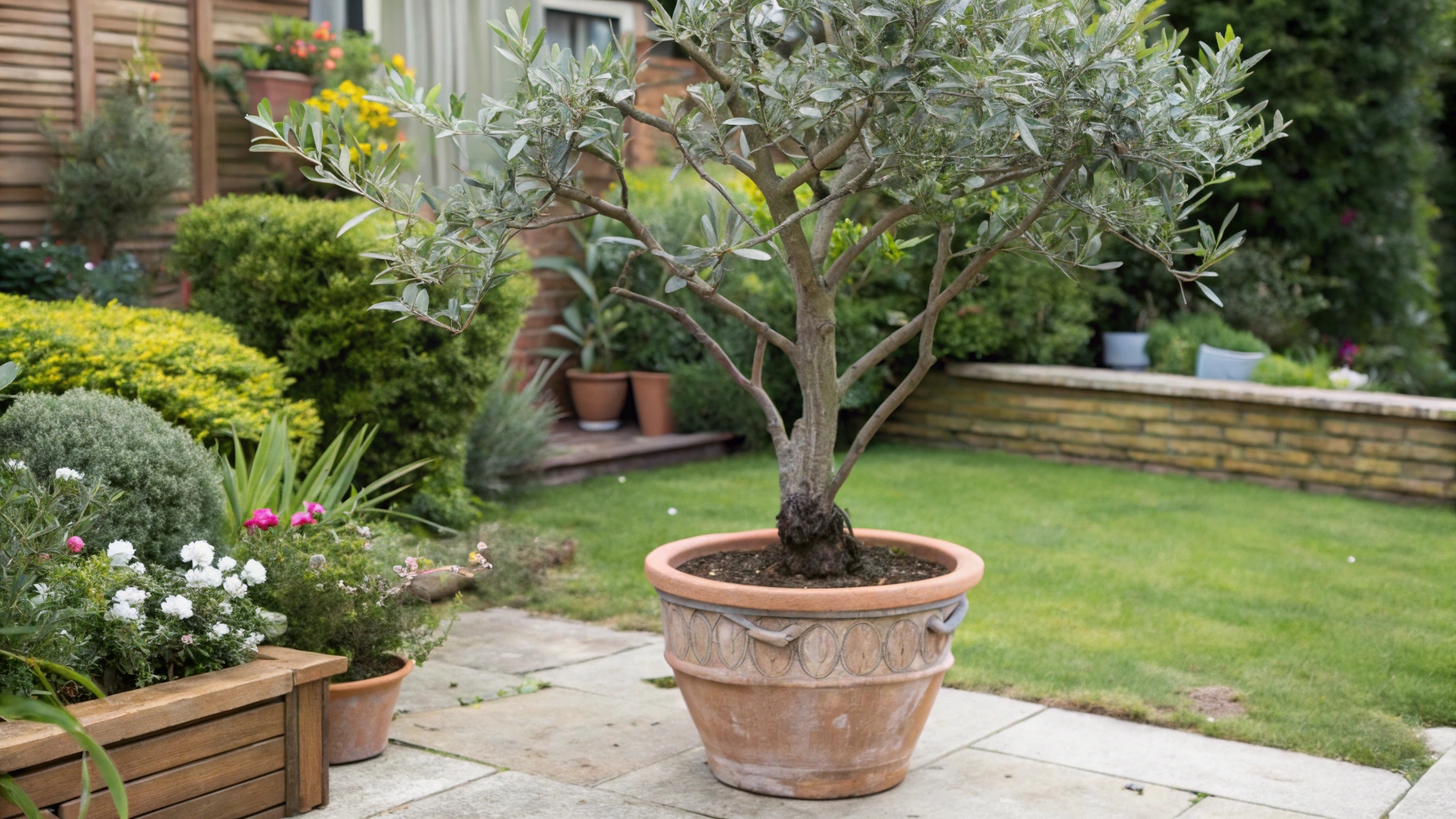
4. Snake Plant ( Sansevieria trifasciata )
- Botanical Justification: The plant’s stiff, sword-shaped foliage exhibits a fleshy, inherently artificial-looking texture, allowing it to be reproduced with exceptional botanical accuracy in artificial forms.
- Material Specifications: High-quality PE or a blend of PE and latex is ideal. Look for subtle variations in color, with darker green edges and lighter green variegation patterns.
- Construction Details: The leaves should have a slightly textured surface and a firm, upright posture. Avoid any glossiness or overly uniform coloration. The base should be weighted for stability.
- Pro Tip: Snake plants are extremely versatile and work well in a variety of settings, from modern minimalist interiors to more traditional spaces.
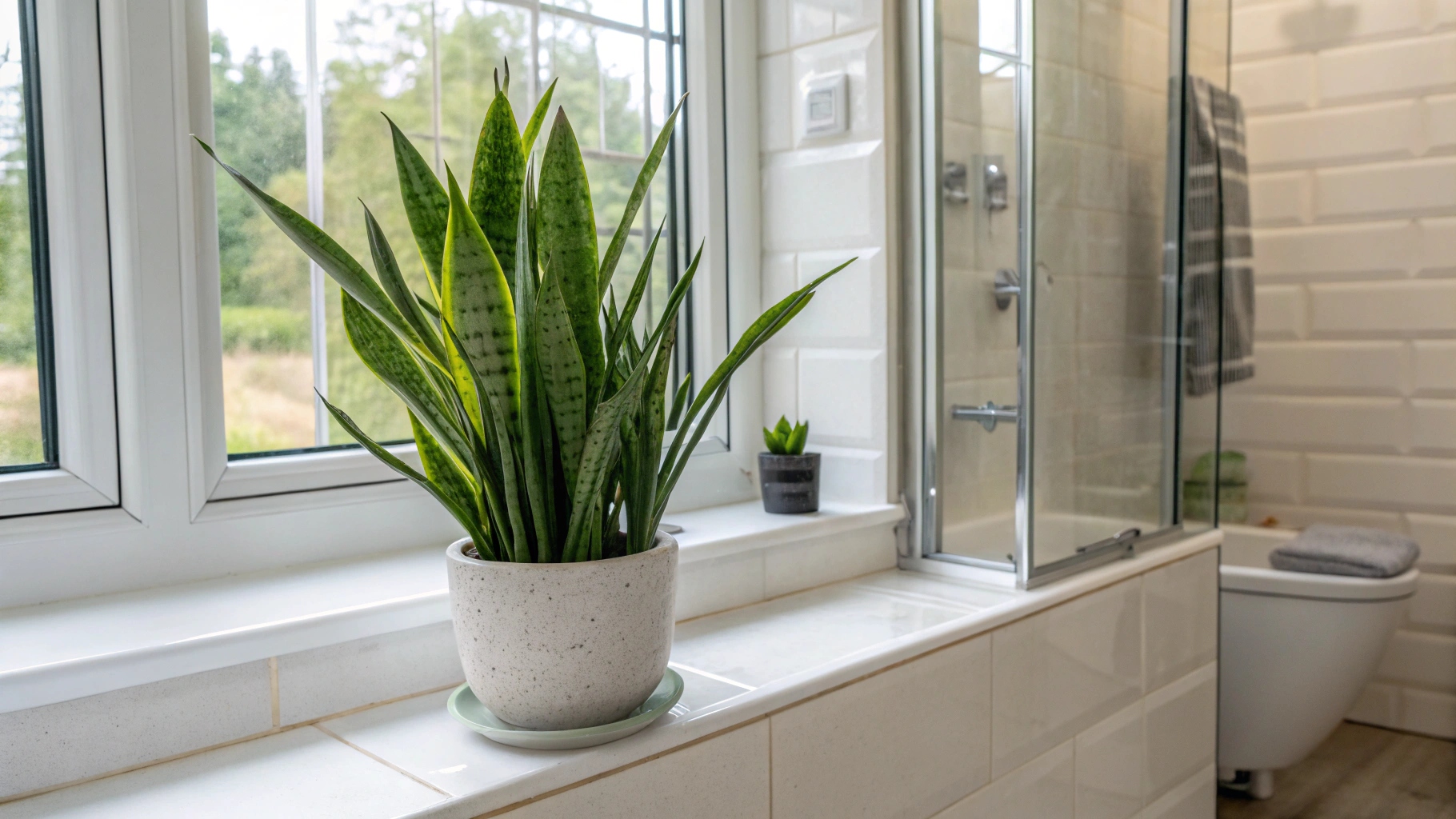
5. Eucalyptus
- Botanical Justification: The rounded and bluish-green leaves of Eucalyptus species are relatively simple in form, but the subtle color and texture are key to achieving realism.
- Material Specifications: A matte finish is crucial. Leaves should be a muted green, often with a grayish or bluish undertone. Premium PE or silk blends can be used.
- Construction Details: Stems should have a realistic texture and a slightly irregular shape. The overall arrangement should mimic the natural, somewhat airy growth habit of eucalyptus.
- Pro Tip: Eucalyptus adds a touch of freshness and sophistication, and works well in both standalone arrangements and as part of larger floral displays.
6. Succulents (Various Genera)
- Botanical Justification: The diverse forms and textures of succulents offer a wide range of options for artificial replication. Their naturally fleshy, often waxy leaves are well-suited to certain materials.
- Material Specifications: PE, latex, and even fabric can be used, depending on the specific succulent species. Look for realistic textures, such as a slightly powdery or velvety finish on some varieties.
- Construction Details: Avoid overly shiny or plastic-looking materials. Subtle color variations and imperfections are desirable. Arrangements should mimic the natural clustering or trailing habits of the specific species.
- Pro Tip: Succulent arrangements are ideal for smaller spaces, such as desktops, shelves, and windowsills. They also work well in terrariums and other enclosed displays.
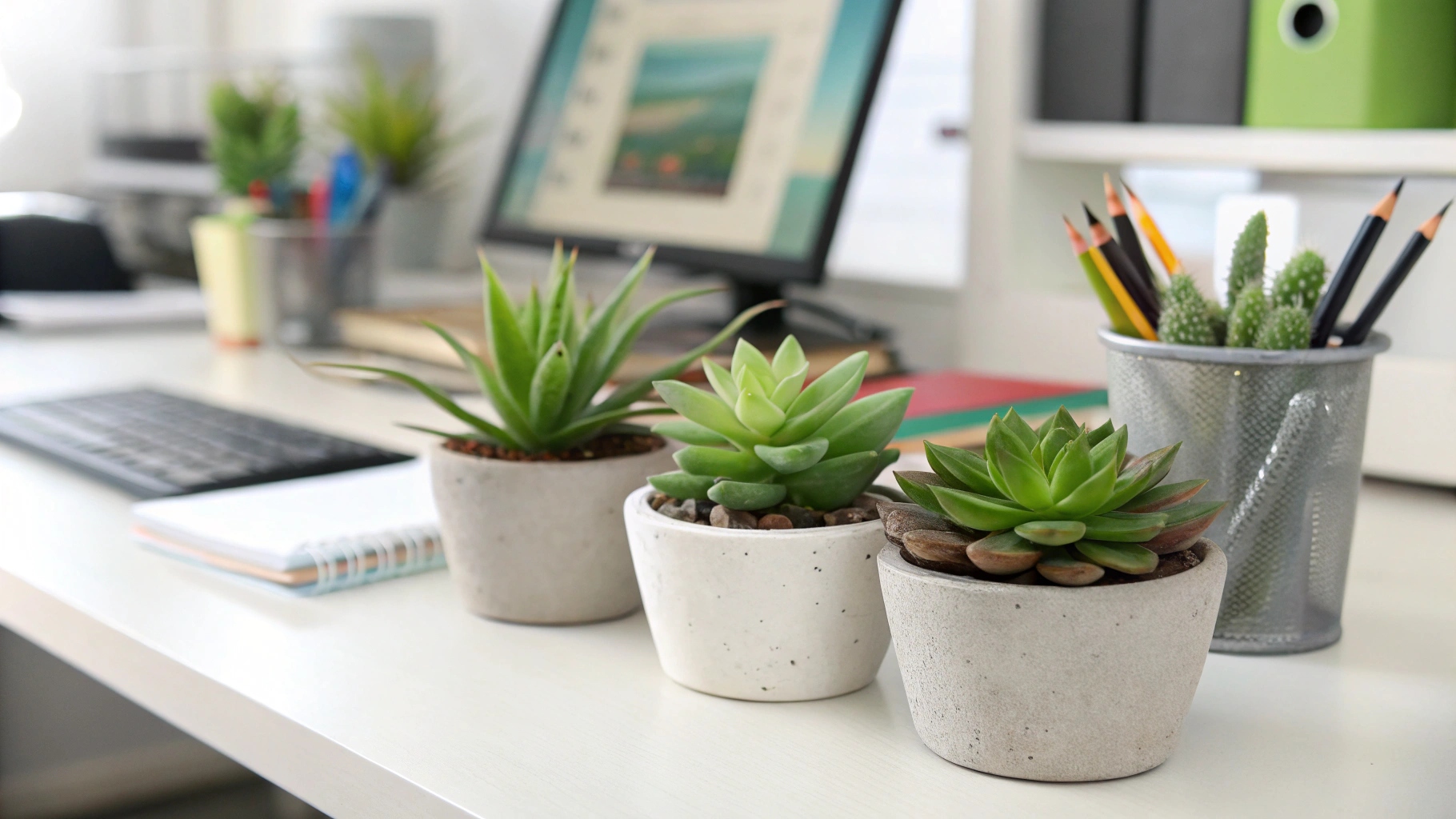
7. Ferns (Various Genera, especially Nephrolepis exaltata – Boston Fern)
- Botanical Justification: The finely divided, often arching fronds of ferns present a challenge, but high-quality materials and meticulous construction can yield impressive results.
- Material Specifications: Premium-grade silk or a blend of silk and PE is often used for the fronds. The material should be lightweight and have a natural drape.
- Construction Details: Fronds should be individually wired to allow for shaping. The level of detail in the individual leaflets is a key indicator of quality.
- Pro Tip: Ferns are excellent for adding a touch of softness and texture to a space. They are particularly well-suited to hanging baskets and wall-mounted planters.
8. Dracaena (Various Species)
- Botanical Justification: Similar to Sansevieria, the often stiff, sword-shaped or strap-like leaves are relatively straightforward to replicate convincingly.
- Material Specifications: High-quality PE or a blend of PE and latex is preferred. Look for realistic color variations, such as the red edges on Dracaena marginata.
- Construction Details: Leaves should have a slightly textured surface and a firm, upright or arching posture, depending on the species. The base should be weighted for stability.
- Pro Tip: Dracaenas are versatile and can be used in a variety of settings, from offices and commercial spaces to residential interiors.
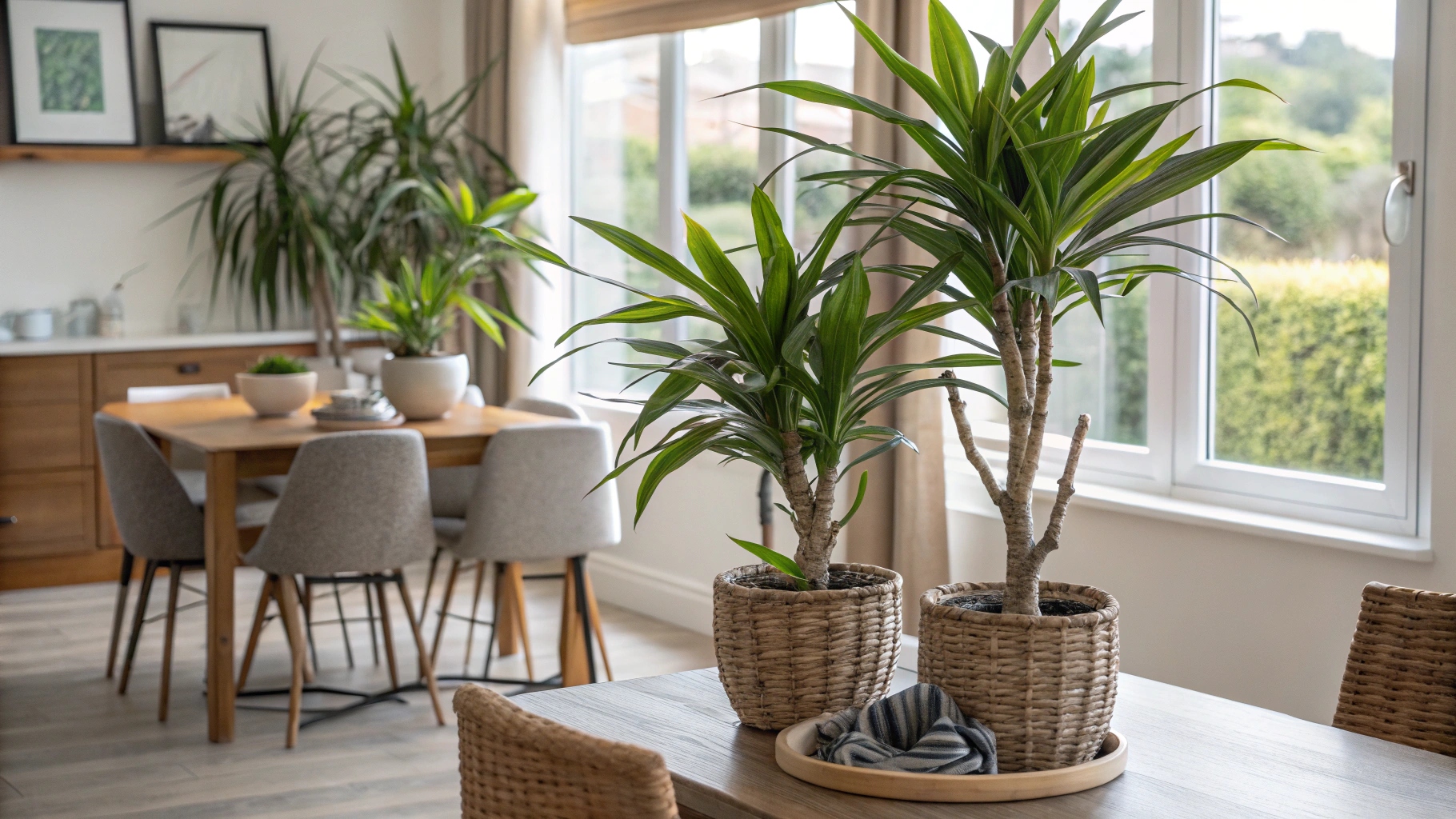
9. Palm Trees (Various Genera, including Areca, Phoenix, Cocos)
- Botanical Justification: The iconic pinnate or palmate fronds of palm trees, combined with their distinctive trunks, make them highly recognizable and desirable for creating a tropical or subtropical atmosphere.
- Material Specifications: Fronds are typically made from high-quality PE or a UV-resistant polymer blend for outdoor use. Trunks can be constructed from steel cores wrapped with natural bark (carefully preserved), fiberglass, or a detailed resin composite. For indoor applications, “Real Touch” fronds offer enhanced realism.
- Construction Details: Frond attachment points should be concealed and reinforced. The trunk should exhibit realistic texture and coloration, mimicking the specific palm species. Consider the overall height and spread carefully, as palms can range from small accent plants to large, dramatic specimens. Look for UV protection for outdoor. Fire Retardant is a must for commercial projects.
- Pro Tip: Palm trees are incredibly versatile and can be used in a wide range of applications, from poolside landscapes and hotel lobbies to shopping malls and office buildings. Consider using a variety of palm species for a more natural and dynamic effect.
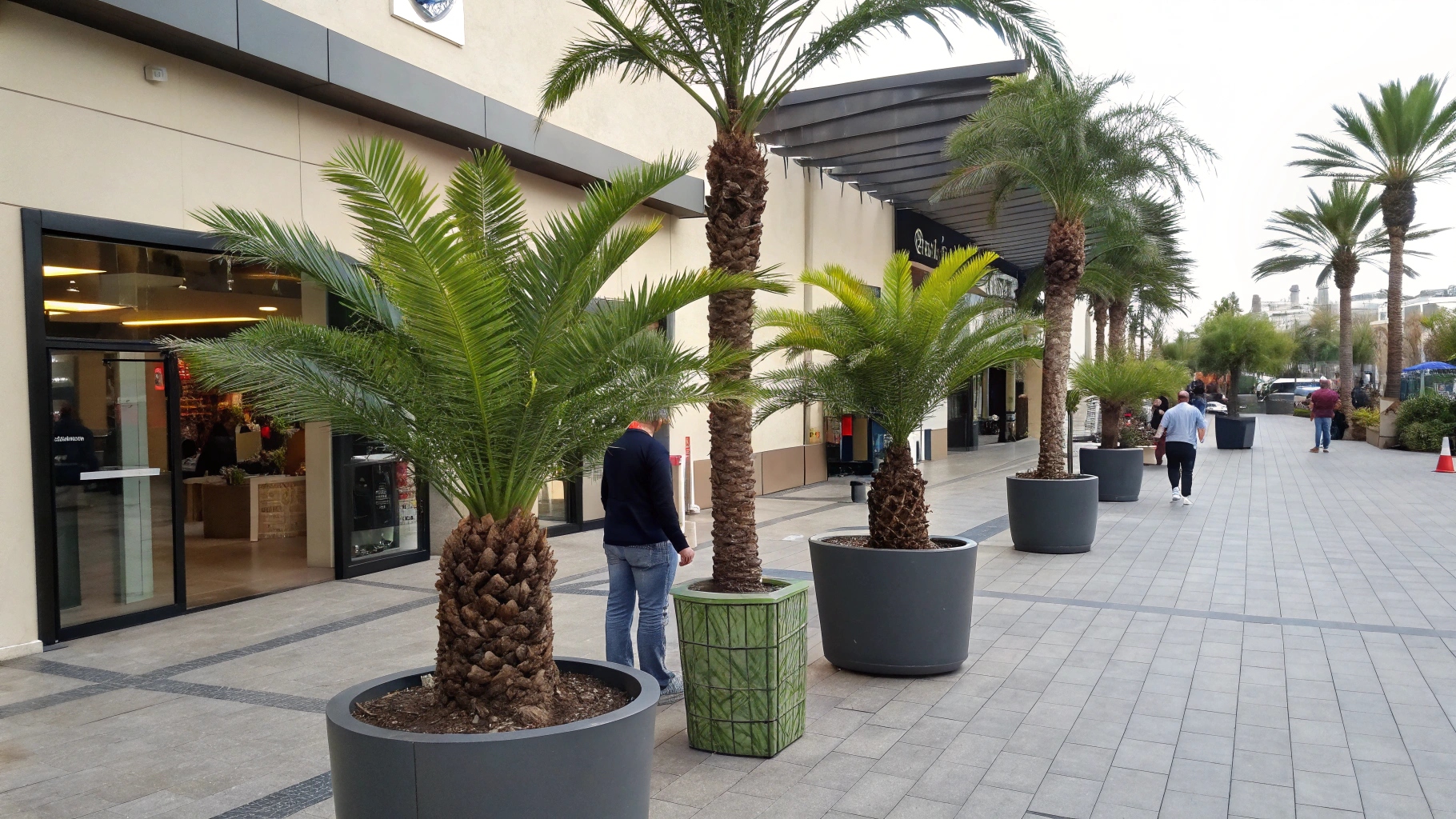
10. Bird of Paradise ( Strelitzia reginae )
- Botanical Justification: The large, paddle-shaped leaves and striking flowers make it a dramatic and highly desirable plant, both in real and artificial form.
- Material Specifications: High-quality PE is typically used for the leaves, while silk or a silk blend is often used for the flowers. The materials should be able to capture the vibrant colors and unique textures of the plant.
- Construction Details: The leaves should have a realistic texture and a slightly curved shape. The flowers should be accurately shaped and colored, with attention to detail in the bracts and petals.
- Pro Tip: Bird of Paradise is a statement piece and is best used as a focal point in a room or landscape.
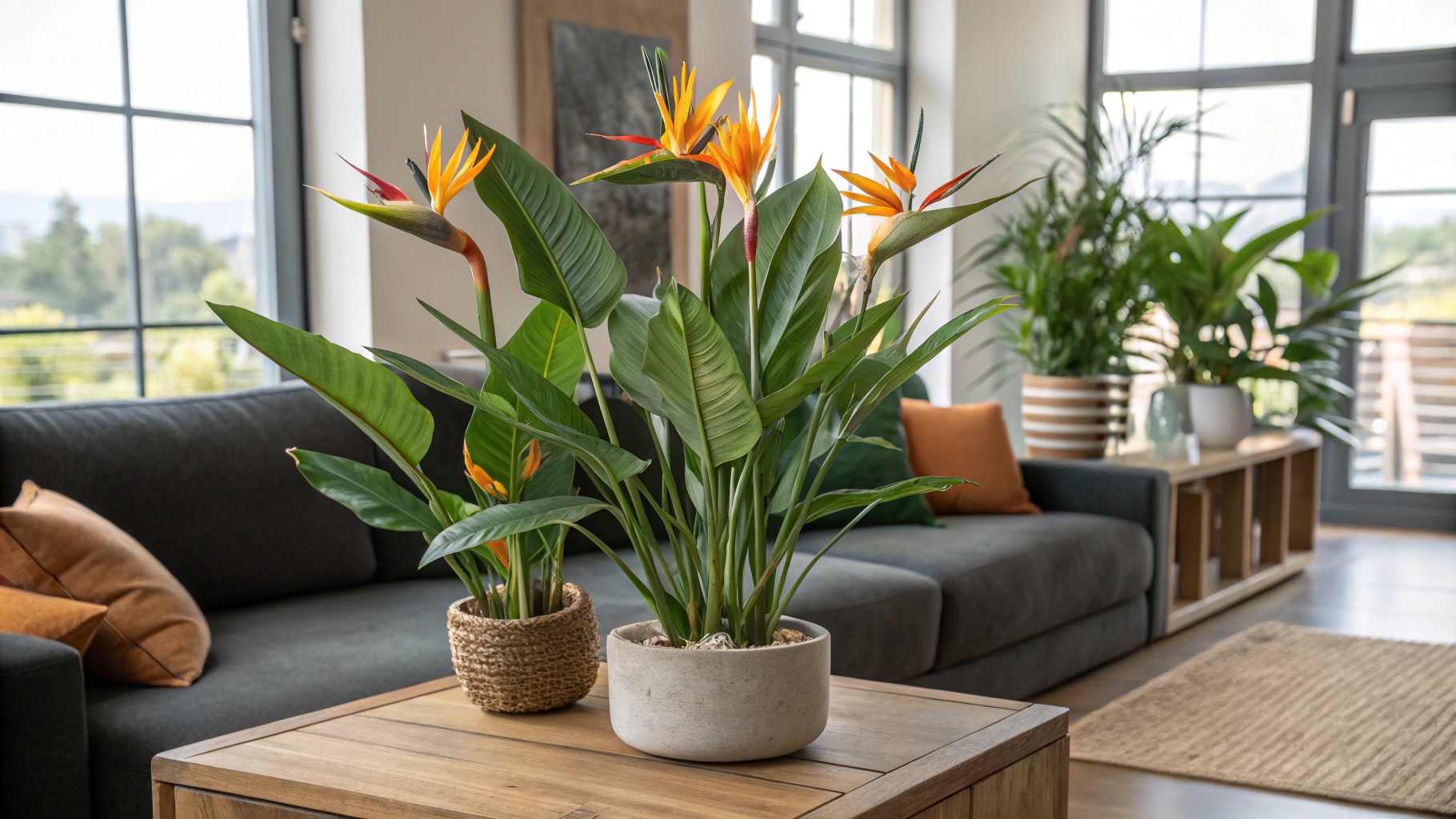
Common mistakes to Avoid
The main problems are cheap materials, uniformity, shiny finishes, poor quality control, UV fading, and fire safety. Addressing these involves investing in quality, avoiding shine, seeking variation, checking reviews, and considering UV/fire resistance.
Common problems and Solutions:
| Pain Point | Description | Solution |
|---|---|---|
| Price vs. Realism | Cheap plants often look cheap. | Invest in higher-quality materials and construction. |
| Shiny Plastic | High-gloss finish is a dead giveaway. | Avoid anything with a shiny finish. Look for matte. |
| Uniformity | Real plants have variations in color, size, and shape. | Look for artificial plants that mimic this natural imperfection. |
| Poor Quality Control | Suppliers can have inconsistent quality. | Check reviews carefully; look for real customer photos. |
| UV Fading | Sunlight can cause fading and degradation. | For outdoor/direct sunlight, ensure UV resistance. |
| Fire Safety | May be a local building requirement. | Ensure fire-retardant material is used. |
2025 Latest Artificial Plant Trends and Innovations
Artificial plants in 2025 look more real than ever thanks to new materials and better manufacturing. “Real Touch” technology, results in products that not only look but also feel indistinguishable from their living counterparts, completely eliminating any sense of plastic.
Breakthroughs have also been made in durability and sustainability. For outdoor use, the latest UV-protection technology is no longer a simple surface coating but is integrated directly into the raw materials. This means your artificial outdoor plants can withstand years of sun exposure without fading or becoming brittle, making them a true one-time investment.
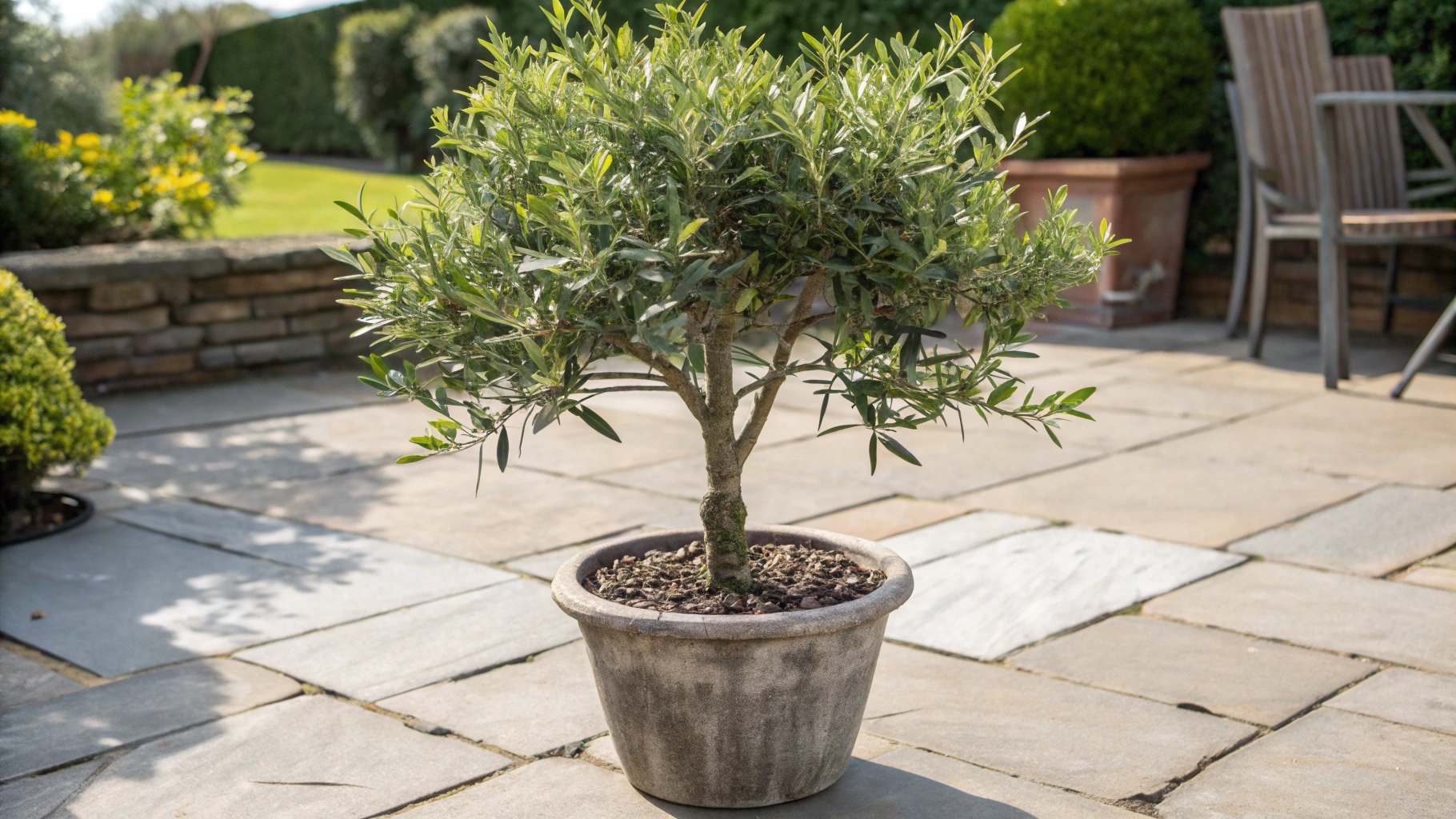
FAQ of Lifelike Artificial Plants:
1. How do I clean my realistic artificial plants?
For regular dusting, you can use a soft feather duster or a microfiber cloth. For a deeper clean, you can lightly mist the plant with water and gently wipe the leaves with a soft cloth. Avoid harsh chemical cleaners, as they can damage the matte finish.
2. Can artificial plants be used outdoors?
Only plants specifically labeled as UV-resistant should be used outdoors. Look for fade-resistant materials and weather-resistant construction. Always choose a dedicated realistic artificial outdoor plant for patios or balconies.
3. How can I make artificial plants look more realistic?
- “Fluff” and Shape: Bend and shape the wired leaves and stems to create a natural and asymmetrical look.
- Use a Realistic Pot: Don’t just stick the plant in any old container. Choose a pot that complements the plant’s style and size. And consider to add real soil, moss, or stones to the top for added realism.
- Dust Regularly: Simple dust can keep your artificial plants clean and real.
- Mix and Match: Combine artificial plants with real ones to create a more believable display.
- Consider placement: You can place the plants where they would be naturally found.
Conclusion
The world of artificial plants has evolved a lot. You can forget the dusty, plastic-looking fakes of the past. Today’s high-quality options can be surprisingly lifelike, offering the beauty of nature without the maintenance. Choosing realistic and high quality artificial plants is about considering materials, construction, and key details. By focusing on quality and avoiding common pitfalls, you can enjoy the beauty of nature, without the work.
About FeelReal Artificial Plants
At FeelReal, we craft botanically accurate artificial plants for the modern home and office. We use a combination of “Real Touch” PE materials and real wood trunks to create greenery that not only looks real but feels real. Our mission is to make beautiful, maintenance-free decor accessible to every place. For personalized advice or to see our full 2025 collection, contact our team for a free consultation.
